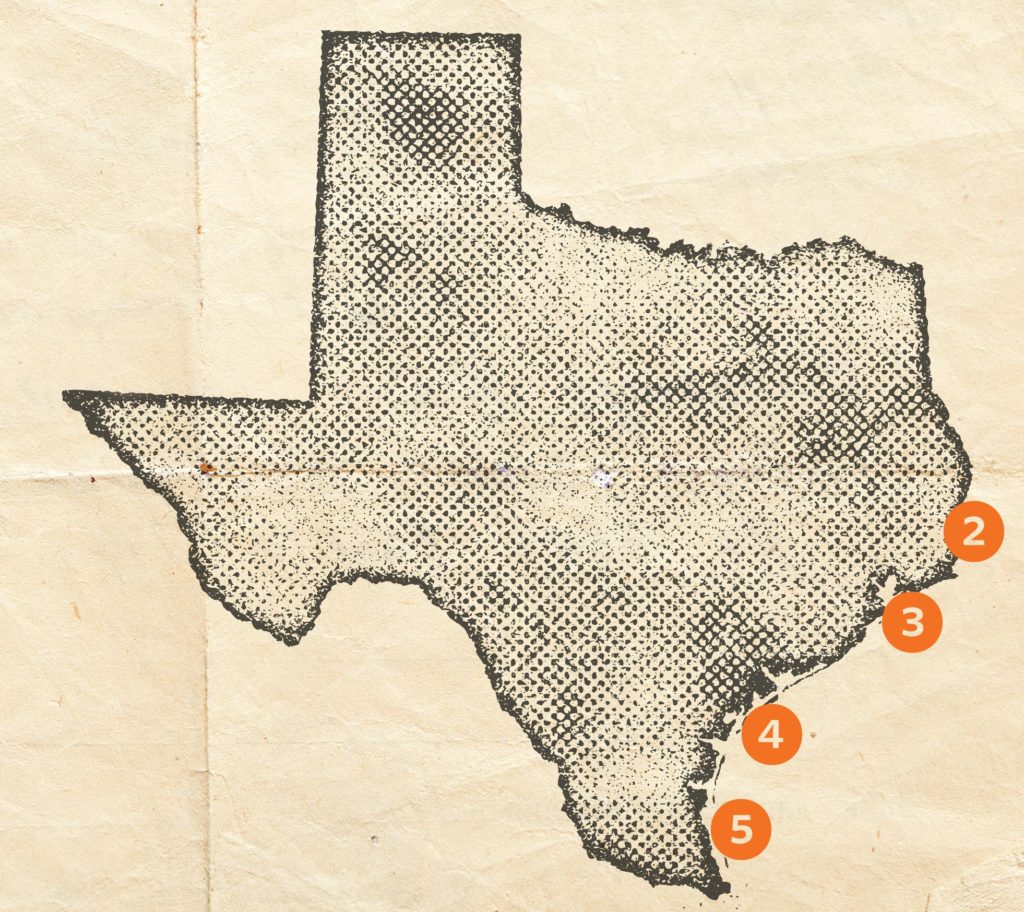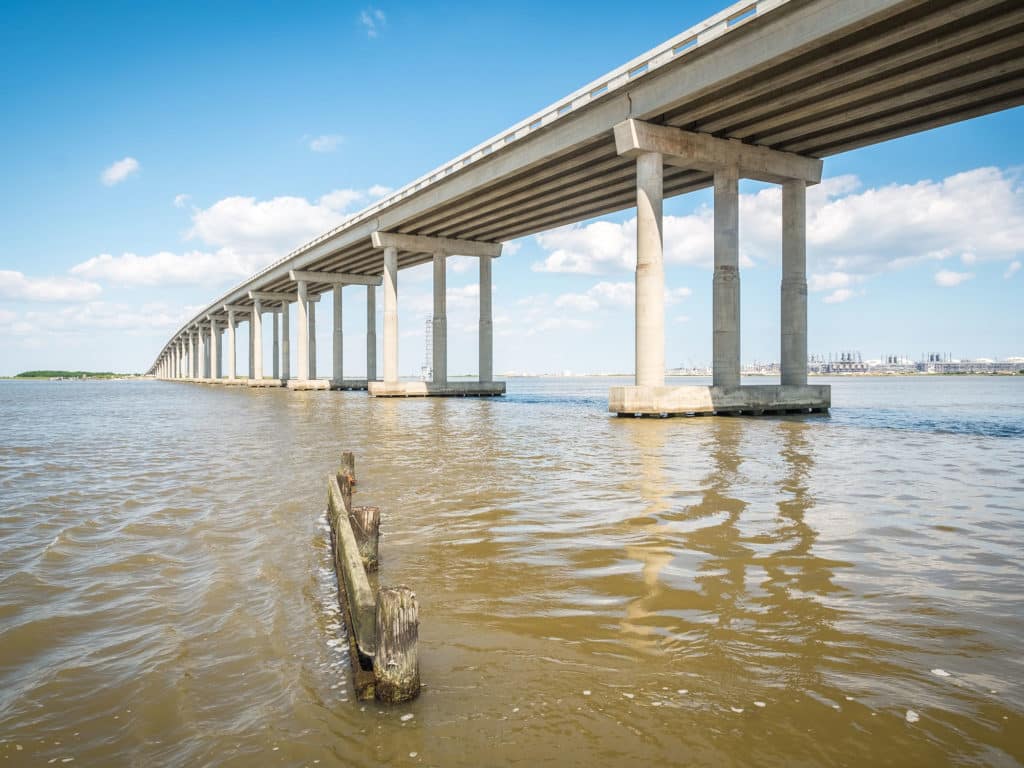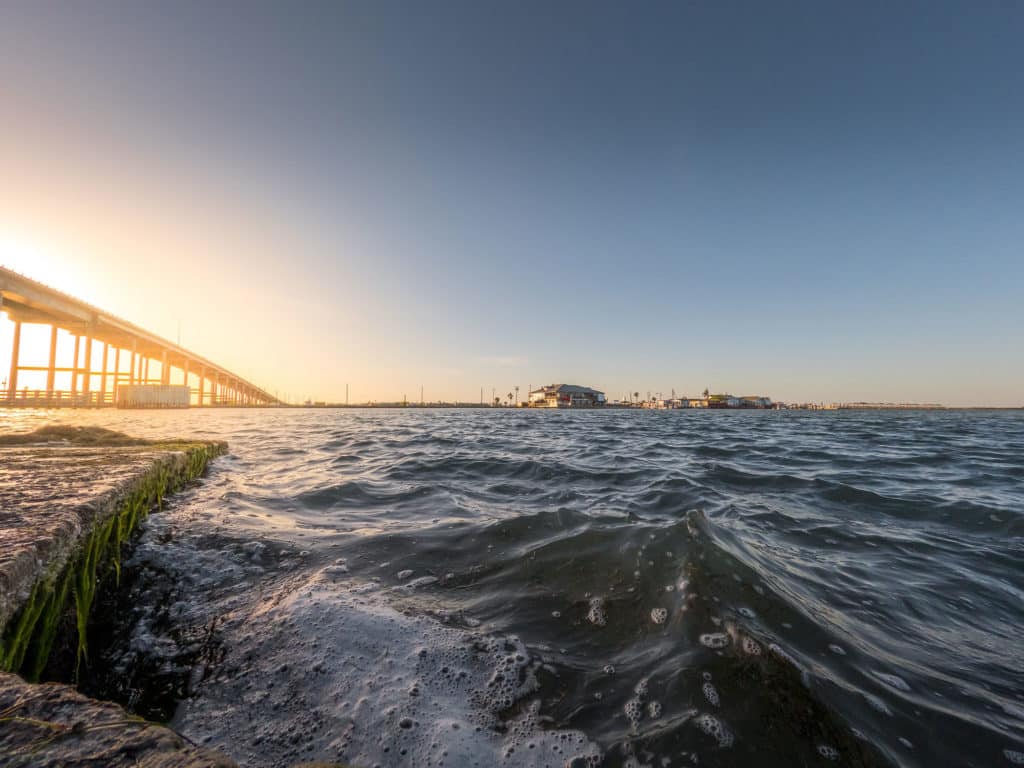
The Texas coastline covers 367 miles, and as you can imagine, that’s one heckuvalot of water. Along the way, a few particularly prime estuaries, lakes and bays hold trophy trout. But here’s the kicker: The trout fishing, in general, is pretty much great from one end to the other. To limit your wandering, here are four recommended starting points to target big fish:

2. Sabine Pass
One of the more popular trophy-trout hotspots, Sabine Pass—at the Louisiana border—connects Sabine Lake to the Sabine jetties and the Gulf of Mexico. To be more specific, Lighthouse Cove, at the middle of the pass, is a true trout magnet.
My PR at this not-so-well-known jewel weighed just over 10 pounds. Caught her on a chartreuse-and-black MirrOlure Top Dog in 2 feet of water.
Topwater lures rule here. Tie on one of these three lures: a Top Dog, Super Spook Jr. or Rapala Skitter Walk. Best colors: bone, blue and chrome, and chartreuse and black.
What makes Lighthouse Cove so good for trout? Reefs, as in the oyster type. The reefs attract big-time numbers of mullet in summer and fall, and that attracts trophy trout.

3. Galveston Bay
Capt. Jim West has guided on East Galveston Bay for decades. When it comes to catching big trout, he’ll tie on a Top Dog and work it over some of the many reefs scattered throughout the bay.
“The trick is to work the Top Dog along the edge of the shell,” West says. “That’s where schools of mullet will be moving.”
To fish East Galveston Bay from a kayak, put in at Stingaree Marina about midway down the Bolivar Peninsula on the south shoreline. Cross the Intracoastal Waterway and make a right to find the mouth of Big Pasture Bayou.
The shoreline from Big Pasture Bayou west to Elmgrove Point is big-trout water. Use topwaters early, then switch to soft plastics.
Just so you know: After you fish, stow the boat and dine at Stingaree Restaurant on the water. The fried oysters and shrimp are way good, as is the boiled shrimp and grilled red snapper. Just the smell of this place will make you go mad.

4. Baffin Bay/Upper Laguna Madre
“It’s tough to beat looking for trout in scattered sand pockets,” says Baffin Bay guide Joey Farah. “That’s a perfect ambush area for trout—big trout.”
Farah says soft plastics do produce, but if he gets a chance, he’ll work a topwater lure. Trophy trout prefer mullet, so mullet imitations have taken plenty of gators. One of the all-time best and most popular topwater lures is a Super Spook Jr. in chrome and blue. Another is the MirrOlure Top Dog in bone or chartreuse and silver.
During warm months, shrimp proliferate. “That’s a perfect time to be fishing something like a D.O.A. paddle tail a foot or two under a popping cork,” he says. “One of the best out there, and one I use a lot, is a 4-inch D.O.A. Jerk Shad.”
Clear and red glitter and root beer and gold glitter top the color choices when fishing the clear tides.

5. Lower Laguna Madre
At the extreme south end of the Texas Gulf coast lies the legendary Lower Laguna Madre. The US portion of this ecosystem covers more than 120 miles of primo clear water. Here, sight-casting to trophy trout is at its finest.
Just recently, Austin Dishman and I hooked up at South Padre Island with Capt. Eric Glass, a fly-fishing and light-tackle guide. After putting us on all the redfish we could handle, he transitioned us to a wide-open flat in a backwater area with a good mix of sand and turtle grass. That’s good stuff for big trout.
Within a half-hour, Glass called the shot on what looked like a 7-plus-pound trout, easing along in a foot of gin-clear water. Dishman was on point with his fly rod and a No. 2 Clouser. He twitched the fly, and the big trout pounced.
The lower portion of the Laguna Madre produced the state record 15.6-pound trout for Bud Rowland in 2002. He spotted the monster feeding along a shell bank.








